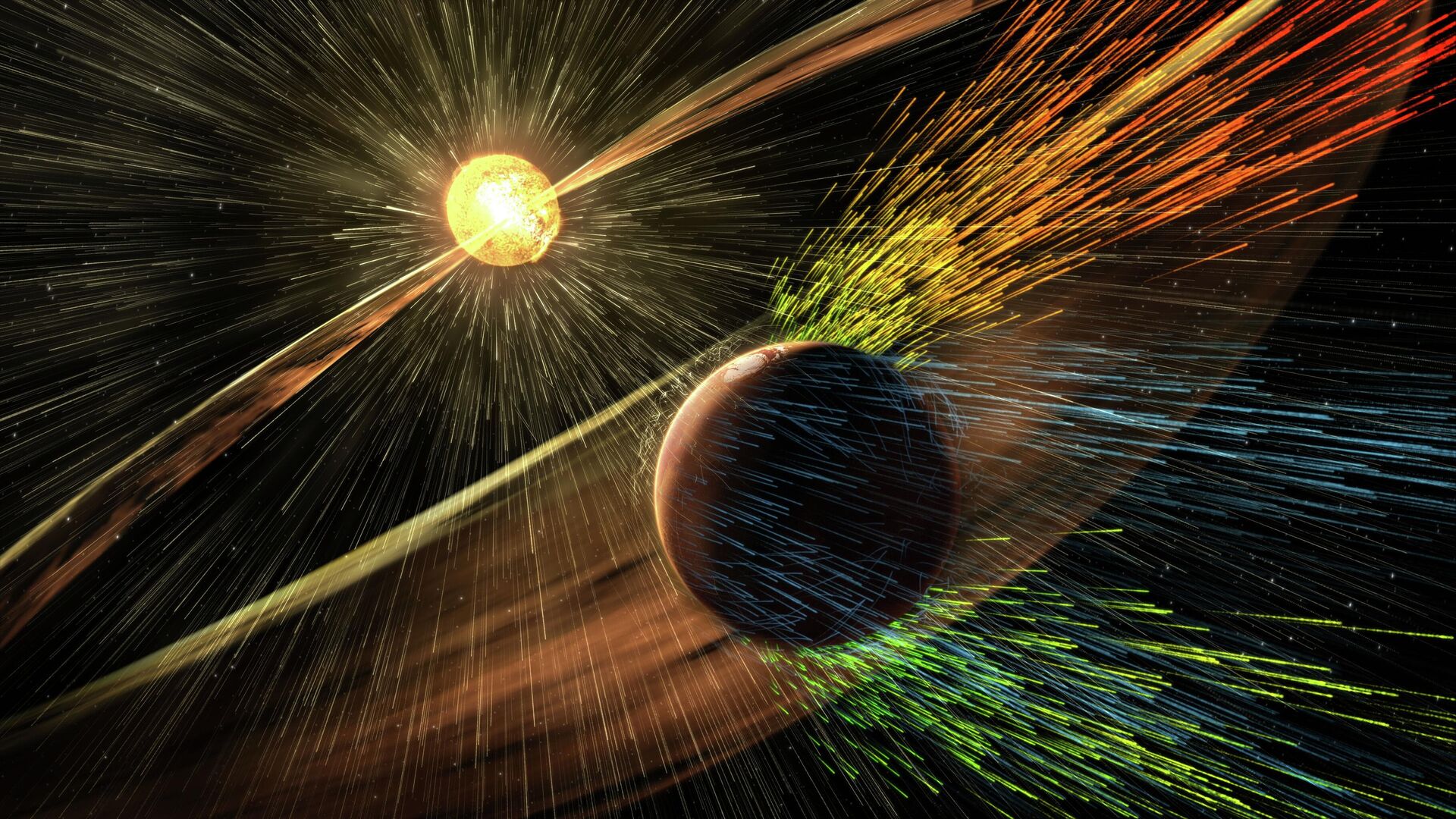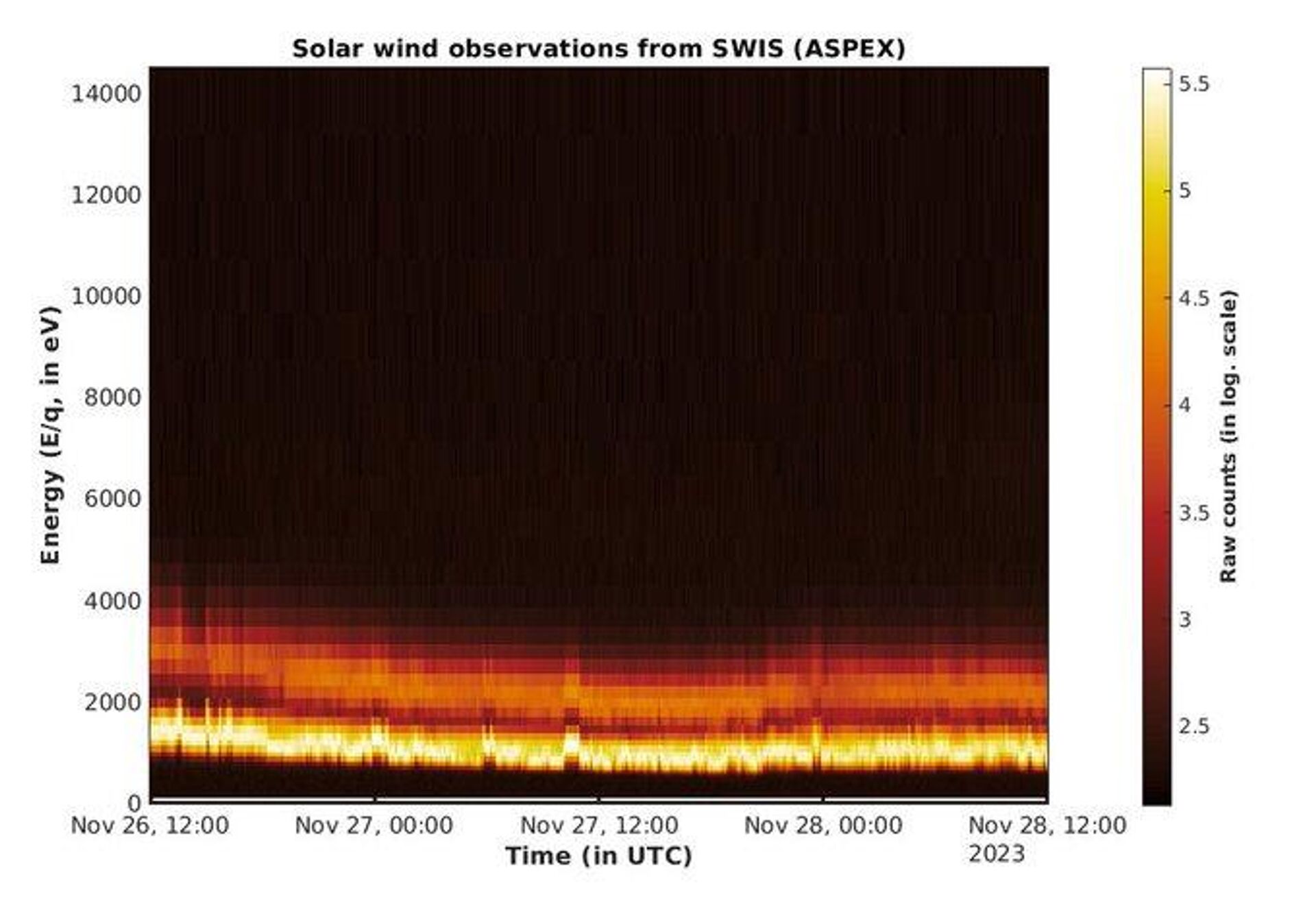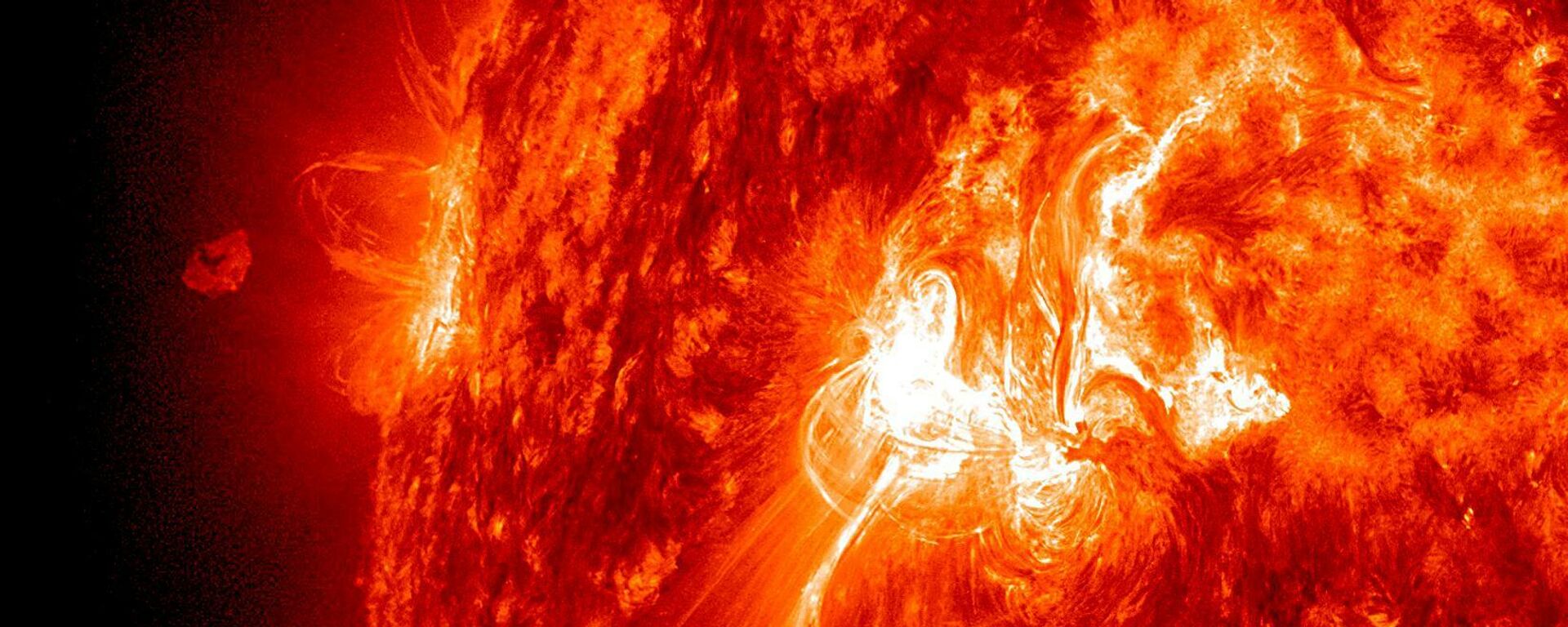https://sputniknews.in/20231202/indias-aditya-l1-mission-reveals-details-about-solar-winds-5674687.html
India’s Aditya-L1 Mission Reveals Details About Solar Winds
India’s Aditya-L1 Mission Reveals Details About Solar Winds
Sputnik India
India’s Aditya-L1 Solar Mission has operationised one of its seven payloads which are aimed at studying the outermost layer of the Sun from the L1 orbit.
2023-12-02T13:57+0530
2023-12-02T13:57+0530
2023-12-02T13:57+0530
science & tech
science & tech
indian space research organisation (isro)
india
aditya-l1 mission
automatic weather stations
climate change
science diplomacy
https://cdn1.img.sputniknews.in/img/07e7/08/0a/3526148_0:0:3640:2048_1920x0_80_0_0_f30d92f1cb6ac4f1cda17a46b9ccf02b.jpg
India's Aditya-L1 solar mission has launched a payload to study the characteristics of solar winds, the Indian Space and Research Organisation (ISRO) said on Friday..The Aditya-L1 mission consists of seven payloads that will study the outermost layer of the Sun from the L1 orbit.The ISRO said that the Aditya Solar wind Particle Experiment (ASPEX) payload has been “performing normally”.The Indian space agency explained that ASPEX comprised two devices - the Solar Wind Ion Spectrometer (SWIS) and a Supra-thermal and Energetic Particle Spectrometer (STEPS).The Indian agency noted that SWIS, which involves two sensor units with a 360-degree field view, was operating in planes perpendicular to each other.What Has Aditya-L1 Revealed?The ISRO statement explained that SWIS has been able to successfully measure solar wind ions, primarily protons and alpha particles.The ISRO has asserted that these variations in protons and alpha particles have given a “comprehensive snapshot of solar wind behaviour”.The Indian space agency underscored that the change in proton and alpha particle number ratio carried the potential to provide “indirect information about the arrival of Coronal Mass Ejections (CMEs) at the Sun-Earth Lagrange Point L1”.CMEs are “large expulsions of plasma and magnetic fields from the Sun’s corona”, according to the National Oceanic and Atmospheric Administration (NOAA).It further expressed hope that the knowledge set to be unveiled by ASPEX in coming days would not only help understand the solar winds better, but also help in gauging its “implications” for the world.
https://sputniknews.in/20230918/isros-aditya-l1-mission-starts-to-gather-scientific-data-4311301.html
india
Sputnik India
feedback.hindi@sputniknews.com
+74956456601
MIA „Rossiya Segodnya“
2023
Dhairya Maheshwari
https://cdn1.img.sputniknews.in/img/07e6/0c/13/138962_0:0:641:640_100x100_80_0_0_2cb44360dbcdf6d84bf4b299cd045917.jpg
Dhairya Maheshwari
https://cdn1.img.sputniknews.in/img/07e6/0c/13/138962_0:0:641:640_100x100_80_0_0_2cb44360dbcdf6d84bf4b299cd045917.jpg
News
en_IN
Sputnik India
feedback.hindi@sputniknews.com
+74956456601
MIA „Rossiya Segodnya“
Sputnik India
feedback.hindi@sputniknews.com
+74956456601
MIA „Rossiya Segodnya“
Dhairya Maheshwari
https://cdn1.img.sputniknews.in/img/07e6/0c/13/138962_0:0:641:640_100x100_80_0_0_2cb44360dbcdf6d84bf4b299cd045917.jpg
aditya-l1, aditya l1 mission, aditya l1 mission launch date, coronal mass ejections, sun l1 point, solar winds, solar storms, corona, sun corona, isro, isro news, isro satellites, science news, space news
aditya-l1, aditya l1 mission, aditya l1 mission launch date, coronal mass ejections, sun l1 point, solar winds, solar storms, corona, sun corona, isro, isro news, isro satellites, science news, space news
India’s Aditya-L1 Mission Reveals Details About Solar Winds
Launched in September, India’s Aditya-L1 solar probe is expected to enter the orbit around Sun’s L1 point next month. The L1 orbit is nearly 1.5 million square km from the Earth.
India's Aditya-L1 solar mission has launched a payload to study the characteristics of solar winds, the Indian Space and Research Organisation (ISRO) said on Friday..
The Aditya-L1 mission consists of seven payloads that will study the outermost layer of the Sun from the L1 orbit.
The ISRO said that the Aditya Solar wind Particle Experiment (ASPEX) payload has been “performing normally”.
The Indian space agency explained that ASPEX comprised two devices - the Solar Wind Ion Spectrometer (SWIS) and a Supra-thermal and Energetic Particle Spectrometer (STEPS).
“The STEPS instrument was operational on September 10, 2023. The
SWIS instrument was activated on November 2, 2023, and has
exhibited optimal performance,” ISRO disclosed.
The Indian agency noted that SWIS, which involves two sensor units with a 360-degree field view, was operating in planes perpendicular to each other.
What Has Aditya-L1 Revealed?
The ISRO statement explained that SWIS has been able to successfully measure solar wind ions, primarily protons and alpha particles.
“A sample energy histogram acquired from one of the sensors over two days in November 2023 illustrates variations in proton (H+) and alpha particle (doubly ionized helium, He2+) counts,” the Indian agency stated.
The ISRO has asserted that these variations in protons and alpha particles have given a “
comprehensive snapshot of solar wind behaviour”.
The Indian space agency underscored that the change in proton and alpha particle number ratio carried the potential to provide “indirect information about the arrival of Coronal Mass Ejections (CMEs) at the Sun-Earth Lagrange Point L1”.
CMEs are “large expulsions of plasma and magnetic fields from the Sun’s corona”, according to the National Oceanic and Atmospheric Administration (NOAA).
“Enhanced alpha-to-proton ratio is often regarded as one of the sensitive markers of the passage of interplanetary coronal mass ejections (ICMEs) at the L1 and hence considered crucial for space weather studies,” ISRO said.
It further expressed hope that the knowledge set to be unveiled by ASPEX in coming days would not only help understand the solar winds better, but also help in gauging its “implications” for the world.




